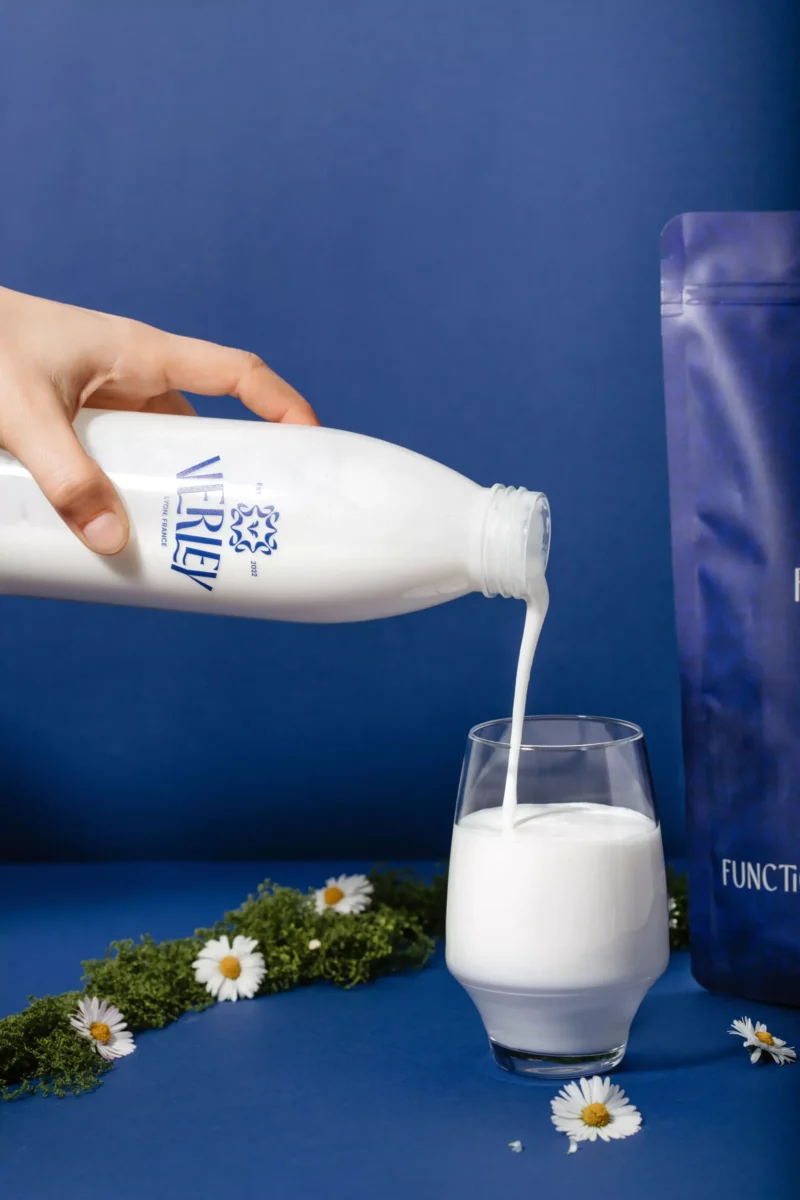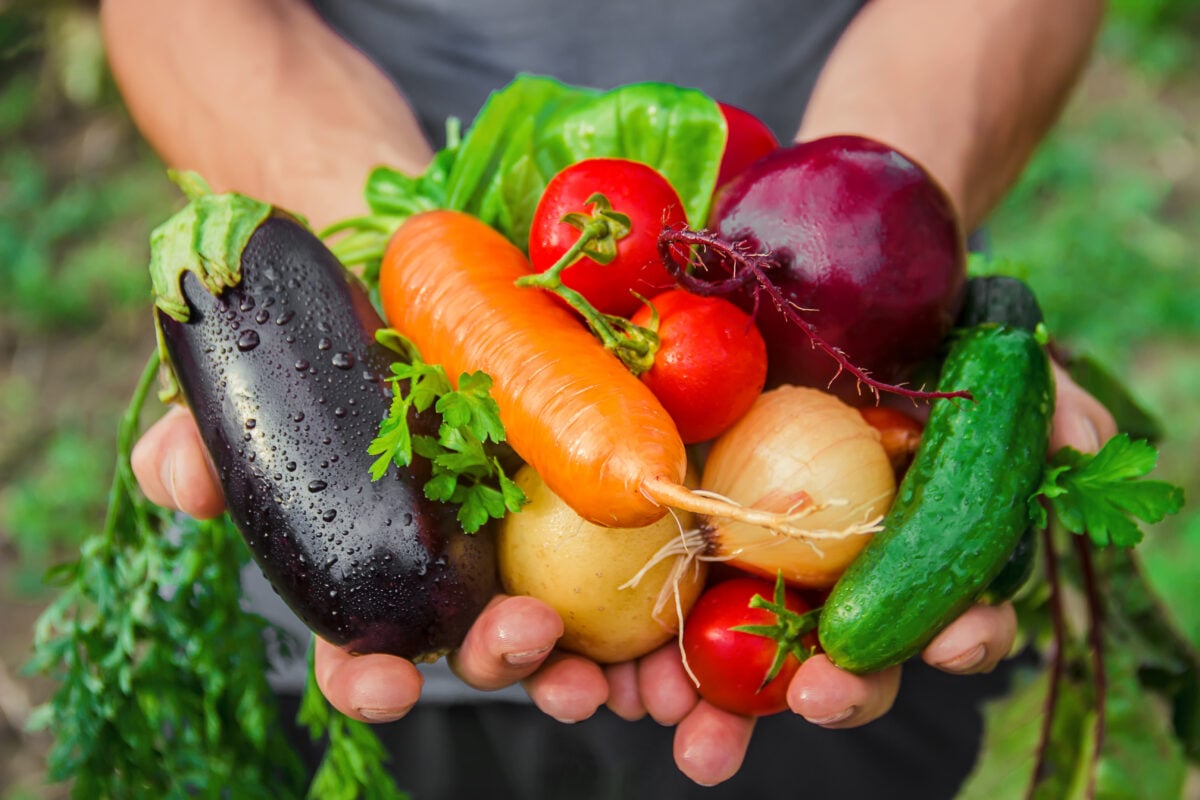子供、特に妊婦は殺虫剤への曝露に対してより脆弱です。現実世界の暴露レベルをテストしたら、結果はどうなるでしょうか?
ミロス ポキミカ
によって書かれた: ミロス ポキミカ
医学的に検証した結果 Xiùying Wáng, M.D. 博士。
2023年8月4日更新私たちのほとんどは、有毒で汚染された環境に住んでいることを知っています。私たちのほとんどは、汚染にさらされており、これらの有毒化学物質が引き起こす可能性のあるさまざまな病気のリスクが高まっていることを知っています。農薬への曝露による慢性的な健康への影響には、がんやその他の腫瘍が含まれます。脳と神経系の損傷。先天性欠損症; 不妊症およびその他の生殖問題。肝臓、腎臓、肺、その他の身体器官への損傷、白血病、先天異常、死産、自然流産、不妊症と不妊症、内分泌かく乱、遺伝毒性、脳の発達障害などです。農薬への曝露は、他の猛毒と同様に致命的なものですが、1 つの違いがあります。最初の症状に気づき始めたときには、すでにダメージが生じています。
子供、特に妊婦は殺虫剤への曝露に対してより脆弱です なぜなら、赤ちゃんの神経系と免疫系はまだ発達段階にあるからです。
子どもたちは細胞分裂の速度が速く、体重が軽いため、農薬への曝露に対する感受性は高く、その用量は、たとえば成人男性が対処できる用量よりもはるかに少ないです。また、赤ちゃんや子供は器官が未熟で、免疫系や解毒酵素が大人ほどうまく機能しないため、有毒な汚染物質に対して特に脆弱です。特定の初期開発期間中の農薬への曝露は、永久的な損傷を引き起こす可能性があります。現実世界の農薬曝露を現実のシナリオで分析したら、結果はどうなるでしょうか? 私たちは本当に危険にさらされているのか、それともビーガンについての話題ばかりなのか ダイエットと少食 すべての親油性POP(残留性有機汚染物質)の食物連鎖における生物濃縮を避けるための連鎖は、単なる大げさなマーケティングストーリーでしょうか?公式の推奨事項とは何ですか?FDA の毒物学者はこれらすべてについて何と言っていますか?
この研究では (フォークト他、2012) カリフォルニアの子供たちは、複数の食物汚染物質への農薬暴露の検査を受けました。
ヒ素、DDE、ディルドリン、ダイオキシン類については、すべての子供 (100%) ががんの安全性レベルを超えていました。
過去においては、人口全体が毒殺されるという状況はほとんどなく、参加者全員が例外なく測定されました。また、がん以外の安全性のベンチマークレベルは、 アクリルアミド濃度は就学前児童の 96 パーセントが超えており、また、水銀濃度は 10 パーセントの子供が安全基準を超えていました。
アクリルアミドは、米国政府機関によって発がん性物質として認められている物質です。高温でデンプンと反応して生成されます。そのため、パン、フライドポテト、ポテトチップス、クッキーなど、揚げたり焼いたりしたでんぷんが豊富な食品には、でんぷんが多く含まれています。重要なのは露出のレベルです。
FDAの毒物学者が、ヒ素の1日の平均摂取量は消費者に危険をもたらさないと信じていると言うとき、私は彼らの正直さを信じていないと言います。私たちにできることは、信念ではなく論理を適用することです。
研究により、 本当のレベルの ヒ素暴露 成人の一日許容レベルの100倍以上でした。100倍を超えて100%以下の値。 これはまた書きたいと思います。1日の許容レベルの100倍以上。 幼児・未就学児は約300回。これはまた書かせてください。300倍以上。「私も信じたい」し、X-ファイルは好きですが、FDAの嘘をつく腐敗した毒物学者は好きではありません。
この研究における過剰曝露の比率(曝露レベルが安全レベルの何倍であるか)は次のとおりでした:DDE は 2 ~ 12、ヒ素は 116 ~ 297、ディルドリンは 18 ~ 67、クロルダンは 4 ~ 5(小児の間)、PCDD/F の場合は 202 ~ 1010。はい、それはダイオキシン (PCDD) の許容値の最大 1010 倍です。
ディルドリンは DDT のより安全な代替品として作られましたが、2 年後の 1972 年に禁止されました。どの食品が最も汚染されているかを調べてみると、それらはすべての年齢層で同様でした。
肉、乳製品、ジャガイモ、キュウリは POPs (DDE、ディルドリン、クロルデン、PCDD/Fs) で最も汚染されています。。クロルデンが禁止される 1988 年までは、家庭用のシロアリ駆除や柑橘類、トウモロコシの栽培に使用されていました。
また、主な POP 貢献者は、淡水魚、家禽、キノコ、マスクメロン、ピザ (子供のみ)、およびほうれん草 (大人のみ) でした。
現在使用されている農薬 (エンドスルファン、ペルメトリン、クロルピリホス) を見ると、主な原因はセロリ、イチゴ、ブドウ、トマト、リンゴ、モモ、ナシ、ピーマン、ほうれん草、ブロッコリー、レタス、インゲンです。動物性食品に含まれるレベルはカウントしないでください。
ヒ素への曝露に関しては、養殖サケ、マグロ、家禽、キノコがすべての年齢層でトップの原因となっている。
ために アクリルアミド露出チップおよびその他すべての種類の揚げ物 あらゆる年齢層向けのフライドポテト、クラッカー、シリアルなどのポテト.
水銀への曝露は魚、特にマグロでした。
乳製品は、子供のクロルピリホス曝露とあらゆる年齢層の鉛曝露の主な原因でもあります。 最大の原因物質の 1 つは乳製品であり、場合によっては PCDD/Fs 曝露、DDE、クロルデンの主な原因物質となっています。乳製品からの PCDD/Fs 曝露は、成人では乳製品の摂取量が少ない (そして肉の摂取量が多い) ため、小児でより顕著でした。
一般の人にとっては驚くかもしれないが、 牛乳 肉に加えて、農薬の重要な供給源であることが判明しました。 これは、放牧地や牛に与えられる飼料でのクロルピリホスの使用の結果です。この行為は有機牛乳の生産では禁止されています。牛乳は POPs の主要な発生源の 1 つです。
魚はヒ素、ダイオキシン、ディルドリン、クロルデン、DDT の重要な摂取源でした。
POP のような化学物質の問題は、動物性脂肪に蓄積する性質があることです。したがって、動物性脂肪の消費を減らすか、肉、乳製品、魚のうち最も脂肪の少ない選択肢を選択することで動物性脂肪を避けることが、暴露を減らすための 1 つの戦略となります。
より良い結果をもたらす毒性を回避する別の戦略は、植物ベースの食事を摂取することです。 お米の場合、いくつかの戦略で暴露量を下げることができますが、植物は成長している水からより多くのヒ素を自然に吸収するため、本質的には何もすることができません。米国ではヒ素系農薬の使用により状況が劇的に悪化しており、土壌は汚染されている。2015 年 12 月 31 日、FDA は最後のヒ素含有薬の承認を取り消しました。EUは動物消費用にヒ素を含む薬物を承認したことがないことに留意すべきである。そのため、2011年現在、消費者の圧力により、米国では鶏の飼料としてヒ素を使用することが禁止されている。なぜこの習慣がこれほど長く続いたのでしょうか?もっと良い質問は、ヒ素の歴史を知っているなら、そもそもなぜヒ素を使用したのかということでしょう。
参考文献:
- Vogt, R.、Bennett, D.、Cassady, D.、Frost, J.、Ritz, B.、および Hertz-Picciotto, I. (2012)。カリフォルニア州の子供と成人に対する食品汚染物質への曝露によるがんおよびがん以外の健康への影響: リスク評価。 環境衛生: 世界的なアクセス科学ソース, 11, 83. https://doi.org/10.1186/1476-069X-11-83
関連記事
栄養と健康について何か質問はありますか?
ぜひご意見をいただき、次回の投稿でお答えしたいと思います。皆様のご意見とご意見に感謝しており、すぐにご連絡をお待ちしております。私もあなたを招待します フォローする Facebook、Instagram、Pinterestでダイエット、栄養、健康に関するコンテンツをご覧ください。そこにコメントを残して、他の健康愛好家とつながり、あなたのヒントや経験を共有し、私たちのチームやコミュニティからサポートや励ましを得ることができます。
この投稿があなたにとって有益で楽しいものであり、学んだ洞察を生かす準備ができていることを願っている。この投稿が役に立ったと思われた方は シェアする 友人や家族など、その恩恵にあずかれるかもしれない人たちと一緒に。誰が健康の旅にガイダンスやサポートを必要としているかわからないのですから。
– あなたはおそらくそれも好きでしょう –

栄養について学ぶ
ミロス・ポキミカは、自然医学の医師、臨床栄養士、医療健康と栄養のライター、栄養科学アドバイザーです。書籍シリーズの著者 ビーガンに行きますか?科学の復習また、自然健康サイト「GoVeganWay.com」を運営している。
医療上の免責事項
GoVeganWay.com では、最新の栄養と健康関連の研究のレビューをお届けします。提供される情報は著者の個人的な意見を表すものであり、専門的な医学的アドバイス、診断、または治療に代わることを意図または暗示するものではありません。提供される情報は情報提供のみを目的としており、資格のある医師または医療提供者の相談、診断、および/または治療に代わるものとして機能することを意図したものではありません。GoVeganWay.com で読んだことや GoVeganWay.com を通じてアクセスしたことを理由に、専門家の医学的アドバイスを無視したり、医療治療を受けるのを遅らせたりしないでください。
認可された医師に相談する前に、GoVeganWay.com で読んだ内容の結果としてライフスタイルの変更や変更を決して適用しないでください。
医療上の緊急事態が発生した場合は、直ちに医師または 911 に電話してください。GoVeganWay.com は、内部で言及されている特定のグループ、組織、検査、医師、製品、手順、意見、またはその他の情報を推奨または承認しません。
編集者のおすすめ –
ミロス・ポキミカは、自然医学の医師、臨床栄養士、医療健康と栄養のライター、栄養科学アドバイザーです。書籍シリーズの著者 ビーガンに行きますか?科学の復習また、自然健康サイト「GoVeganWay.com」を運営している。
最新記事 -
プラントベースのニュース
-
Some Dogs Can Sort Toys By Function, Says New Study On Canine ‘Label Extension’
on 11月 5, 2025
-
Courgette, Leek, White Bean And Kale Stew
on 11月 5, 2025
-
Precision Fermented Dairy Proteins Receive ‘No Questions’ Approval From FDA
on 11月 4, 2025
-
This One-Pan Ramen Is Ready In 30 Minutes
on 11月 4, 2025
-
How to Make Fresh Vanilla Hemp Milk at Home
on 11月 3, 2025
-
Animal Farming Is ‘World’s Biggest Cause Of Food Waste,’ Says Report
on 11月 3, 2025
-
Butter Bean And Sweet Papas Coconut Stew
on 11月 2, 2025
トップヘルスニュース — ScienceDaily
- Scientists may have found how to reverse memory loss in aging brainson 11月 6, 2025
Virginia Tech researchers have shown that memory loss in aging may be reversible. Using CRISPR tools, they corrected molecular disruptions in the hippocampus and amygdala, restoring memory in older rats. Another experiment revived a silenced memory gene, IGF2, through targeted DNA methylation editing. These findings highlight that aging brains can regain function through precise molecular intervention.
- Scientists uncover meditation’s hidden side effectson 11月 5, 2025
Meditation is widely praised for its mental health benefits, but new research shows that it can also produce unexpected side effects for some people—from anxiety and dissociation to functional impairment. Psychologist Nicholas Van Dam and his team found that nearly 60% of meditators experienced some kind of effect, and about a third found them distressing.
- Most Americans don’t know alcohol can cause canceron 11月 5, 2025
Most U.S. adults don’t realize alcohol raises cancer risk, and drinkers themselves are the least aware. Scientists say targeting these misbeliefs could significantly reduce alcohol-related cancer deaths.
- A breakthrough map reveals how the brain really workson 11月 5, 2025
Scientists have shown that brain connectivity patterns can predict mental functions across the entire brain. Each region has a unique “connectivity fingerprint” tied to its role in cognition, from language to memory. The strongest links were found in higher-level thinking skills that take years to develop. This work lays the groundwork for comparing healthy and disordered brains.
- A shapeshifting protein explains rabies’ deadly poweron 11月 5, 2025
Researchers discovered how rabies virus exerts massive control over host cells with very few genes. A key viral protein changes shape and binds RNA, allowing it to infiltrate different cellular systems. This adaptability could explain the power of other deadly viruses, including Nipah and Ebola. The breakthrough may lead to next-generation antivirals or vaccines.
- Cockroaches are secretly poisoning indoor airon 11月 5, 2025
Cockroach infestations don’t just bring creepy crawlers, they fill homes with allergens and bacterial toxins that can trigger asthma and allergies. NC State researchers found that larger infestations meant higher toxin levels, especially from female roaches. When extermination eliminated the pests, both allergens and endotoxins plummeted. The findings highlight how pest control is vital for cleaner, healthier air indoors.
- Scientists shocked to find E. coli spreads as fast as the swine fluon 11月 5, 2025
Researchers have, for the first time, estimated how quickly E. coli bacteria can spread between people — and one strain moves as fast as swine flu. Using genomic data from the UK and Norway, scientists modeled bacterial transmission rates and discovered key differences between strains. Their work offers a new way to monitor and control antibiotic-resistant bacteria in both communities and hospitals.
パブメッド、 #ビーガンダイエット –
- Impact of in vitro digestion on the cytotoxicity and microbial viability of cholinesterase-inhibitor-rich vegan soups in human intestinal cell modelson 11月 1, 2025
Vegan lunch soups formulated with mushroom, asparagus, leek, and sea buckthorn were previously developed by our team to provide a consistent daily intake of dietary cholinesterase inhibitors. Considering the proposed continuous consumption of these functional soups, it is essential to examine any cytotoxic responses that may occur in the gastro-intestinal tract. This work starts this topic by investigating the effect of in vitro digested soups towards selected human intestinal cells and…
- A 6-Month, Prospective, Multi-arm Study for the Efficacy of Standardized Nutraceuticals to Improve Hair Fiber Thickness and Strengthon 10月 31, 2025
CONCLUSIONS: This study demonstrates that ingestion of these bio-specific HGNs are associated with significantly enhanced hair shaft diameter and decreased breakage, resulting in longer, stronger hair across their intended populations. These findings support the use of these HGNs for hair thinning, offering alternative options for various populations for improving hair growth and thickness.
- Consumer Acceptance of Sustainable Cat Diets: A Survey of 1380 Cat Guardianson 10月 29, 2025
There is increasing awareness about the adverse environmental and ‘food’ animal welfare impacts associated with the production of meat-based pet food. However, little is known about cat guardians’ acceptance of more sustainable food choices for the global population of approximately 476 million pet cats. By surveying 1380 cat guardians, this study explored feeding patterns used by guardians, determinants of their cat food choices, and their acceptance levels of more sustainable cat food…
- Consumer Acceptance of Sustainable Dog Diets: A Survey of 2639 Dog Guardianson 10月 29, 2025
Interest in more sustainable diets for the global population of 528 million companion dogs is steadily increasing, encompassing nutritionally sound cultivated meat, vegan, and microbial protein-based dog foods. Factors driving these alternative dog foods include lower impacts on the environment, fewer welfare problems related to intensively farmed animals and wild-caught fish, and potentially superior canine health outcomes, relative to conventional meat-based dog food. Through a […]
- Beliefs and behaviours associated with vegetarian, vegan, and gluten-free diets among Canadians capable of bearing childrenon 10月 29, 2025
There is increased interest in self-selected exclusionary diet patterns, specifically vegetarian, vegan, and gluten-free (GF) diets, but there is a lack of research exploring the beliefs and behaviours surrounding these diets in Canadians capable of bearing children (CCBC). The goal of this study was to explore the beliefs and behaviours of CCBC who follow vegetarian, vegan, and/or GF diets using mixed methods. A self-administered online Qualtrics™ survey containing 102 questions was […]
ランダムな投稿 –
おすすめの投稿 -

PubMed の最新情報、 #植物ベースの食事 –
- Diet quality scores and incidence of cardiovascular events: A 4-year prospective study of patients in cardiology secondary care (BALANCE Program Trial)by Aline Rosignoli da Conceição on 11月 5, 2025
As a modifiable determinant, dietary patterns are a crucial factor in the prevention of cardiovascular disease (CVD), as they account for more than half of all CVD-related deaths and disabilities. Thus, we aimed to assess whether changes in diet quality along with six a priori-defined diet scores were associated with the incidence of cardiovascular (CV) events during four years of follow-up of secondary care cardiology patients. We conducted a secondary prospective analysis of 1,704, 1,629 […]
- Dietary animal fat disrupts gut microbiota and aggravates Scl-cGVHD after allogeneic hematopoietic stem cell transferby Danielle D Millick on 11月 5, 2025
Allogeneic Hematopoietic Stem Cell Transplant (allo-HCT) is an effective treatment for high-risk or relapsed acute leukemia. However, the frequent occurrence of graft-versus-host disease (GVHD) poses significant complications. Modifiable factors such as the gut microbiome and dietary regimen have the potential to influence the frequency and severity of GVHD. Previous studies in mouse models have shown a direct link between obesity and increased severity of GVHD. Analysis of human data has not…
- Dose-response effects of a mixed condensed and hydrolyzable tannin extract on methane production and diet digestibility using the in vitro gas production techniqueby Jordan M Adams on 11月 5, 2025
Several studies have evaluated the impact of isolated condensed or hydrolyzable tannin extract (TE) supplementation for beef cattle on methane (CH4) mitigation and metabolic functions, but fewer have evaluated their combination. Our objective was to investigate changes in in vitro fermentation dynamics, CH4 production, neutral detergent fiber digestibility (ivNDFD), and ruminal volatile fatty acid (VFA) concentrations in response to the inclusion rate of a TE blend (Silvafeed ByPro; […]
- Discovery of urinary biomarkers of kiwifruit intake in a randomized intervention studyby Zilin Xiao on 11月 4, 2025
CONCLUSIONS: This study identified potential biomarkers of kiwifruit and developed a prediction model that may differentiate consumers. Further validation is necessary to confirm the reliability and generalizability of our findings.
- Nourishing the Skin: A Review of Diet’s Role in Hidradenitis Suppurativaby Jordan Beam on 11月 4, 2025
Hidradenitis suppurativa (HS) is a complex skin condition influenced by both genetic and environmental factors. Increasing evidence points to diet as a key contributor to disease severity through systemic inflammatory pathways. A review of recent literature was conducted to evaluate the relationship between dietary patterns and advancement of HS. Pro-inflammatory diets such as the Western diet, leucine-rich diets, and brewer’s yeast were associated with HS exacerbation through mTOR activation…
- Energy balance in cyclists on plant-based diets during a 30-day, 4300-km ride across Canada: Two case studiesby Sarah A Purcell on 11月 3, 2025
The popularity of ultra-endurance events and plant-based diets highlights the importance of understanding the energetics of athletes with diverse dietary preferences. This study examined energy balance in two recreational cyclists on plant-based diets (male, 41 years; female, 38 years) during a 30-day cross-Canada ride. Resting energy expenditure was measured via whole-room indirect calorimetry before and after the ride. Total energy expenditure (TEE) was assessed using doubly labeled water…











































